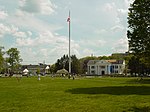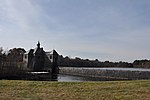The Learning Center for the Deaf

The Learning Center for the Deaf (TLC) is a Framingham, Massachusetts-based non-profit organization and school serving deaf and hard-of-hearing children and adults. The mission of The Learning Center for the Deaf is to ensure that all deaf and hard of hearing children and adults thrive by having the knowledge, opportunity and power to design the future of their choice. TLC has three campuses. The main Framingham campus, where the Marie Philip and Walden Schools, and audiology clinic are located. There is also a second Framingham campus which houses Walden Community Services (WCS) and the interpreting department. There is a third campus in Springfield, MA where WCS has an additional office. TLC offers educational programs for deaf and hard of hearing students from infancy through high school. It also provides community programs including American Sign Language (ASL) classes, an audiology clinic, and interpreting services.
Excerpt from the Wikipedia article The Learning Center for the Deaf (License: CC BY-SA 3.0, Authors, Images).The Learning Center for the Deaf
Kellogg Street, Framingham
Geographical coordinates (GPS) Address Nearby Places Show on map
Geographical coordinates (GPS)
| Latitude | Longitude |
|---|---|
| N 42.306672222222 ° | E -71.428708333333 ° |
Address
Kellogg Street 55
01701 Framingham
Massachusetts, United States
Open on Google Maps







